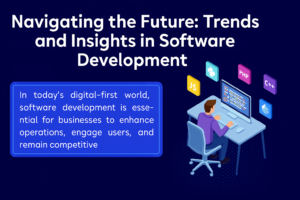Mobile App Development Life Cycle: Explore Essential Phases
The Mobile App Development Life Cycle (MADLC) encompasses several critical phases that transform an app idea into a fully functional product. It begins with thorough planning and research, followed by feasibility assessment, design, and development. Rigorous testing ensures functionality and security, leading to a smooth deployment. Post-launch, the app requires maintenance and scaling to keep up with user demands and market trends. Each phase, from ideation to ongoing support, is essential for delivering a user-friendly, scalable, and high-performance app that aligns with business goals.
The MADLC can be broken down into several essential phases. Each phase has its own set of objectives, tools, and strategies that ultimately contribute to the app’s successful deployment. This guide explores each stage, highlighting the significance of a customized software development process in Dubai and how involving Top Software Developers at each phase enhances the final product.
1. Planning and Research
Purpose and Goals
The planning phase is the foundation of any successful mobile app. At this stage, the primary objective is to outline the app’s purpose, target audience, and core features. This phase requires an understanding of the client’s business goals and the problem the app aims to solve.
Key Activities
- Market Research: Understanding competitors, target audience demographics, and current market trends.
- Defining Core Features: Identifying the primary features and functionalities based on user needs.
- Budgeting and Timeline Estimation: Setting realistic budgets and timelines by considering the complexity of the app and the resources available.
Role of Top Software Developers
Involving Top Software Developers from the beginning allows the team to gather valuable technical insights and plan for a scalable architecture. Experienced developers can assess potential technical challenges and recommend optimal solutions, saving time and reducing costs down the line.
2. Technical Feasibility Assessment
Purpose and Goals
Once the planning phase is complete, it’s crucial to assess the technical feasibility of the app concept. This stage determines whether the app’s features can be implemented with the current technology stack and within the budget.
Key Activities
- Platform Selection: Deciding on the target platform (iOS, Android, or cross-platform) based on market research.
- Backend Requirements: Identifying the backend requirements, such as databases, servers, and third-party integrations.
- Technical Limitations: Recognizing potential limitations and compatibility issues with devices, operating systems, and network requirements.
Role of Customized Software Development Process
In a customized software development process, technical feasibility is closely aligned with client needs. The team must tailor their approach to fit the specific requirements of each project, ensuring that the app performs optimally on the chosen platform while aligning with the client’s budget and goals.
3. Design and Prototyping
Purpose and Goals
Design is critical for user engagement. In this phase, the focus is on creating a user-centered design that’s visually appealing and easy to navigate. Prototyping helps visualize the app’s flow and layout, providing stakeholders with a preview before development begins.
Key Activities
- Wireframing: Creating basic layouts to illustrate the app’s structure and core screens.
- User Interface (UI) Design: Developing detailed, interactive screens that define the look and feel of the app.
- User Experience (UX) Mapping: Designing the app’s navigation to ensure seamless user interaction.
Role of Top Software Developers
Top developers collaborate with designers to ensure the prototype is technically feasible and aligns with the app’s functionality goals. They may also suggest adjustments to improve app performance and user experience, ensuring a harmonious design and functionality balance.
4. Development
Purpose and Goals
The development phase is where the app’s code is written, transforming the concept into a fully functional product. This stage is often divided into front-end and back-end development, with specific tasks allocated to each.
Key Activities
- Front-End Development: Building the user interface and implementing design elements from the prototype.
- Back-End Development: Developing the server, database, and API components that power the app.
- Feature Implementation: Coding core features and functionalities as defined in the planning phase.
Role of a Software Development Company
A software development company with a specialized team brings valuable expertise to this phase, particularly in managing different development environments, integrating third-party tools, and ensuring security measures. By leveraging best practices, they ensure the app is built to perform reliably, securely, and efficiently.
5. Testing and Quality Assurance
Purpose and Goals
Testing is essential to ensure that the app functions smoothly and is free of bugs. This phase involves rigorous testing across devices and scenarios to identify and fix any issues that may affect performance or user experience.
Key Activities
- Functional Testing: Ensuring that each feature works as intended and aligns with the initial requirements.
- Compatibility Testing: Verifying the app’s performance across different devices, screen sizes, and operating systems.
- Security and Performance Testing: Testing for potential security vulnerabilities and evaluating performance under various conditions.
- User Acceptance Testing (UAT): Allowing end-users to test the app in real-world scenarios to ensure it meets their expectations.
Role of a Customized Software Development Process
A customized software development process includes a tailored approach to testing based on the app’s specific requirements. Customizing the testing process can help address unique functionalities and complex integrations, ensuring a reliable and secure product.
6. Deployment
Purpose and Goals
Deployment is the phase where the app is released to the market. This step involves uploading the app to the respective app stores and making it available to users.
Key Activities
- App Store Submission: Preparing necessary documentation, screenshots, and descriptions for app store submission.
- Version Control: Setting up a system for managing app versions and updates.
- User Support Setup: Creating channels for user support and feedback to address any issues post-launch.
Role of Top Software Developers
Experienced developers streamline the deployment process by handling app store guidelines and ensuring the app meets quality standards for acceptance. Their expertise is essential to a smooth deployment, avoiding delays and potential rejections.
7. Post-Launch Maintenance and Support
Purpose and Goals
The post-launch phase is crucial for sustaining the app’s performance and user satisfaction. It involves regular updates, bug fixes, and feature enhancements based on user feedback and evolving technology trends.
Key Activities
- Monitoring and Analytics: Using analytics tools to monitor user behavior, engagement, and technical performance.
- User Feedback Integration: Gathering feedback from users to identify areas for improvement.
- Regular Updates and Security Patches: Releasing updates to add new features, address bugs, and enhance security.
- Scalability Enhancements: Upgrading the app’s infrastructure as the user base grows to maintain performance.
Role of a Software Development Company
No.1 Software Development Company in Dubai provides ongoing support to ensure the app remains functional, secure, and up-to-date with the latest trends. They offer invaluable expertise in handling maintenance tasks, reducing downtime, and enhancing user satisfaction.
8. Scaling and Future Enhancements
Purpose and Goals
As the app gains traction and more users, it may require scaling to meet increased demand. The final phase involves scaling the app’s features and infrastructure to accommodate growth.
Key Activities
- Performance Optimization: Enhancing code and backend infrastructure to manage higher traffic.
- Adding Advanced Features: Implementing new features based on user demand and market trends.
- Exploring Cross-Platform Opportunities: Expanding the app’s reach by developing it for additional platforms, such as launching an iOS version if it was initially Android-only.
Role of Customized Software Development Process
Scaling requires a customized software development process to address the unique needs of the growing user base and evolving industry trends. Tailored approaches allow businesses to introduce features that set them apart from competitors, maximizing app functionality and user experience.
Conclusion
Understanding the mobile app development life cycle is essential for any business or software development company looking to create a successful mobile app. By following a structured process, including thorough planning, meticulous design, robust development, and rigorous testing, companies can create apps that fulfill their clients’ needs and stand out in a crowded market.
In today’s competitive landscape, involving Top Software Developers and adhering to a customized software development process can significantly improve an app’s chances of success. Each phase of the MADLC contributes to creating a robust, user-friendly, and scalable product that supports the client’s business objectives and adapts to the demands of an ever-changing market.
Ultimately, a well-executed MADLC not only leads to a high-quality app but also strengthens the partnership between the development company and its clients, fostering trust and long-term collaboration. By investing time and resources in each phase, companies can deliver superior mobile solutions that drive value, engagement, and growth for their clients.
To read more about Why Choose NodeJS for Web Application Development?














Post Comment